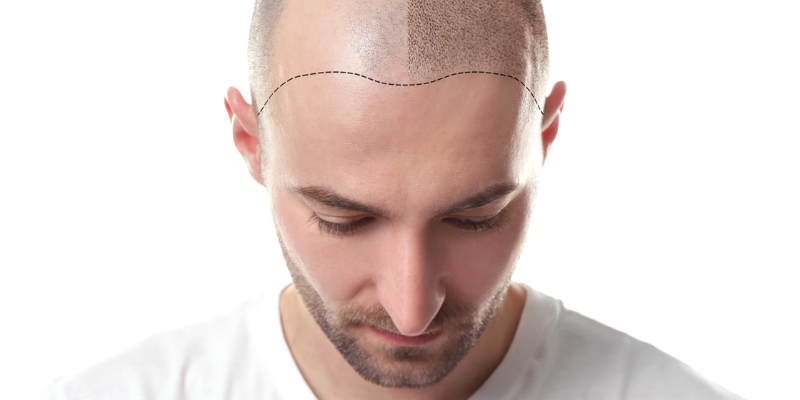Fue Results
Fue results are one of the most talked-about hairs transplant topics recently. The majority of individuals nowadays suffer from hair loss and balding issues, mostly due to genetics and stress, and contemplate hair transplantation. Although it is not a concern for some, hair problems may be a source of irritation for many others. Apart from hereditary and stress-related factors, women’s metabolic changes, dietary issues, excessive weight gain and loss, medication usage, and harsh treatments may all contribute to hair loss. While searching for a solution to these, a variety of products such as herbal and chemical medications, treatments, shampoos and lotions, and serums on the market may be explored. However, their dependability and durability have not been established. Rather than seeking a remedy in this manner, advanced technology allows you to pick entirely permanent and medically confirmed hair transplantation treatments.
Hair transplantation is a surgical procedure that involves transplanting hair from the person’s healthy and genetically non-shedding hair region to the bald area in a sterile operating room setting. While it was first intended to treat male pattern hair loss, it is now used on a large number of women. The hair acquired in this procedure is referred to as graft and is extracted from a region genetically programmed not to fall out. The donor area is the densely haired region. Because the grafts harvested here are resistant to shedding, they retain their qualities and genes even when put to the region experiencing hair loss. In other words, contrary to popular belief, hair shedding or non-shedding is not tied to the skin or a specific place, but to the hair follicle. Along with hair transplantation, it may be used to implant eyelashes, brows, sideburns, beards, and moustaches.
Fue Results In Hair Transplant
Hair loss has nothing to do with the products we use on a regular basis. Such as hair spray, gel, mousse, and gloss. As a result, there is no risk associate with the use of such products after hair transplantation. If such damage had already happening, the hair in the donor region would have been impact and lost as well. A major reason for hair loss is a deficiency of certain minerals in the blood, particularly zinc and iron. Before the hair transplantation, these values should determine and, if require,essential therapies should give to restore these values to normal. Only then should the choice to perform the hair transplant procedure take. To ensure that the transplanted hair seems natural, the procedure should conducting by board-certified physicians and experts.
Naturalness may attain to an unnoticeable degree by hair transplantation procedures conducting by competent professionals in the appropriate health facility. We strive for optimum density in the hair using the Sapphire and DHI procedures we use in hair transplanting. A typical individual has 100 hairs per square centimetre. The goal is to get the closest match possible to the patient’s desiring look. When doing this procedure, the forehead line is taking into account initially. The hairline is an anatomical feature unique to each individual. It is defining by the natural hair boundary between the forehead texture and the hair texture. The most critical factor to remember when it comes to hair transplantation is to pay close attention to the forehead muscle. Without touching the forehead muscle or injuring the mimic muscles, the hairline may change as need.
What Are Fue Results?
In those with broad foreheads or those who have extremely sparse hair on both sides, the hairline may altering without disturbing the forehead line. The desired form may customize base on the patient’s facial type, hairstyle, past hair loss. The state of the balding skin, and other factors. If the patient requests an unsuitable hair type, he is informing of his medical duties. The anatomical structure of his face and probable outcomes, and the most appropriate front line and hairstyle are choosing. The transplanting hair will fall out after a few weeks of the procedure; nevertheless, this is typical. Because the hair that has been lost will regrow in 3-4 months. Following the resolution of this transient shedding, the transplanted hair follicles retain their character and do not fall out.
However, the original hair in the same region may continue to lose over time. Necessitating a fresh hair transplant in the future. Hair loss after surgery may be gradual. Particularly if an unnatural look develops in the new hairline region, a further surgical operation may be necessary. Hair transplantation may perform shaving or unshaving, depending on the surgery style set by the hair transplant expert doctor. To begin, the hairy tissue and the transplanting region are planning. Hairy tissue is planning and shaving as the procedure progresses. Local anaesthetic is administering and microsurgical tools are using to extract hair follicles one by one. Opening channels is determining by the direction of hair development, the angle and density of hair in the targeting location. The removing roots are meticulously and sensitively put in these channels one by one.
Permanent Solution
Throughout the procedure, the goal is to achieve a natural, healthy, and permanent hair look. It is undetectable after the procedure. The surgery takes an average of 6 to 8 hours to perform. Your hair transplantation procedure was a success. Now it’s time to discuss what you should do after hair transplantation. Following the hair transplantation procedure, it will take precisely 12-18 months for the transplanted hair. To adjust to the new environment and completely grow. The first three months, in particular, will be a period of patience during which you will not notice much progress; in fact, the transplanted hair will fall out as well. Naturally, certain tasks fall on patients in the meantime.
The transplantation procedure accounts for 50% of successful transplantation, whereas the post-operative period accounts for the remaining 50%. Smoking as little as possible, drinking natural and helpful goods, refraining from chemical shampoos. It is supplementing with vitamins and nourishing care. Items that promote hair growth that can help your hair become stronger and more lustrous. Let us not forget that the majority of unhappiness with hair transplantation outcomes. It is relating to the fact that hair follicles that are not properly care for after a successful transplant do not develop. As with any cosmetic procedure, post-operative care is critical to achieving the greatest outcomes.
FUE Afro Hair Transplant Results
The FUE Afro hair transplant results are truly impressive. For many people who want a hair transplant African American one, these results represent a newfound level of confidence and self-esteem. The process is not only safe and effective but also discreet, meaning that those with the procedure can go about their daily lives without anyone being able to tell that they have had a transplant. Moreover, the results are permanent and natural-looking, allowing you to feel like yourself again without worry or stress. Additionally, this technique helps with the regrowth of hair loss due to previous procedures like strip harvesting or other damage caused by trauma or medical conditions.

The FUE hair transplant technique for Afro hairs is a minimally invasive procedure that offers excellent outcomes for those suffering from hair loss or thinning due to pattern baldness, injury, or other causes. Patients have reported good retention of the transplanted hair and are satisfied with the overall results after multiple sessions. For best results, it is recommended to follow up on your FUE Afro hair transplant procedure with a tailored aftercare routine that is specific to your needs and managed by a team of professionals.



